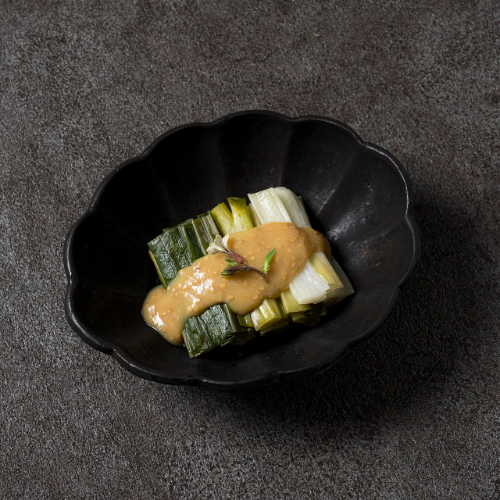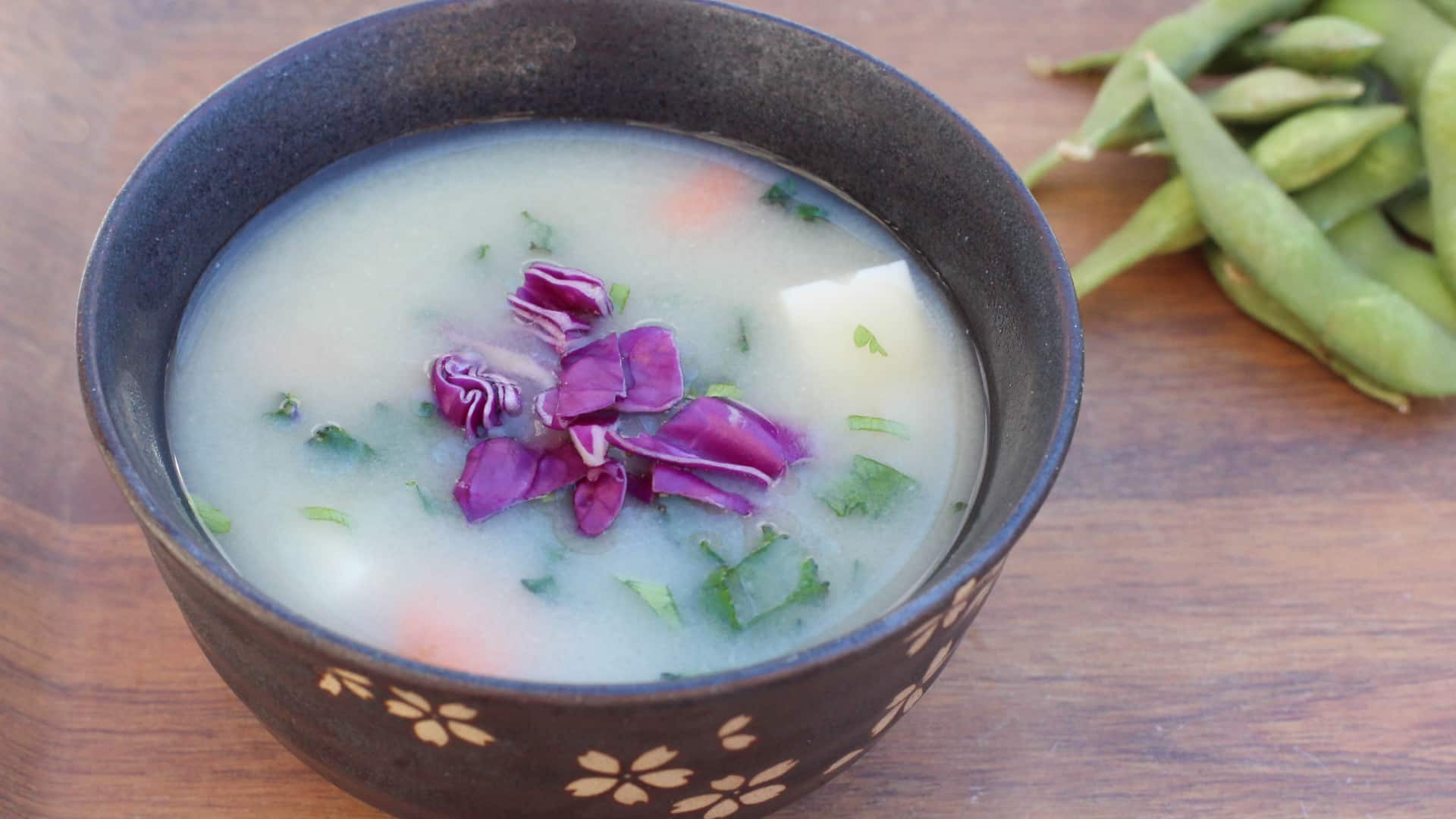
Miso
Miso is a fermented whole-soy food. This thick paste is commonly mixed with hot water to make a delicious soup that’s a staple in Japanese and Korean cuisines. White miso has a mellower flavor than red miso, and making miso soup can be as easy as mixing one tablespoon of miso with two cups of hot water and whatever vegetables you prefer.
The process of producing miso involves adding a lot of salt, so it was always something I avoided—until I actually looked into it. Read my Beans chapter in How Not to Die for the details, but it turns out miso is not associated with the stomach cancer risk attributed to the salt in other fermented foods like kimchi, nor the risk of developing high blood pressure. But what if you are already hypertensive?
Men and women with stage 1 or 2 hypertension (blood pressures ranging from 130 to 159 over 85 to 99) were randomized to eat either two bowls a day of miso soup, which alone exceeded the recommended daily sodium limit, or soybeans with no added salt for two months. Surprisingly, the miso group ended up with lower nighttime blood pressures than the soybean control group. The mechanism is unclear. Given a slight drop in body weight in the miso group, the miso may have a diuretic effect by increasing sodium excretion through the kidneys, a phenomenon that has been demonstrated in rats. Regardless, miso is now a staple of my kitchen and cookbooks.
For substantiation of any statements of fact from the peer-reviewed medical literature, please see the associated videos below.
Image Credit: Image by 宏和 東涌 from Pixabay. This image has been modified.
Popular Videos for Miso

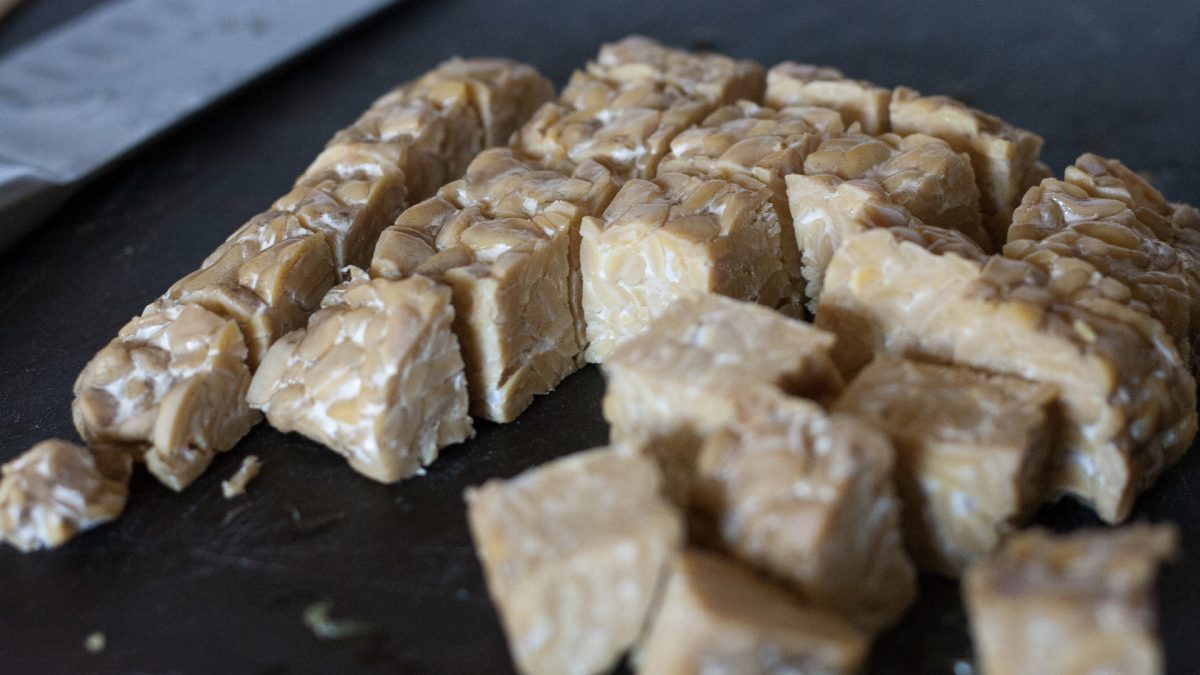
Fermented or Unfermented Soy Foods for Prostate Cancer Prevention?
Which appear more protective: fermented soy foods, such as miso and tempeh, or unfermented soy,...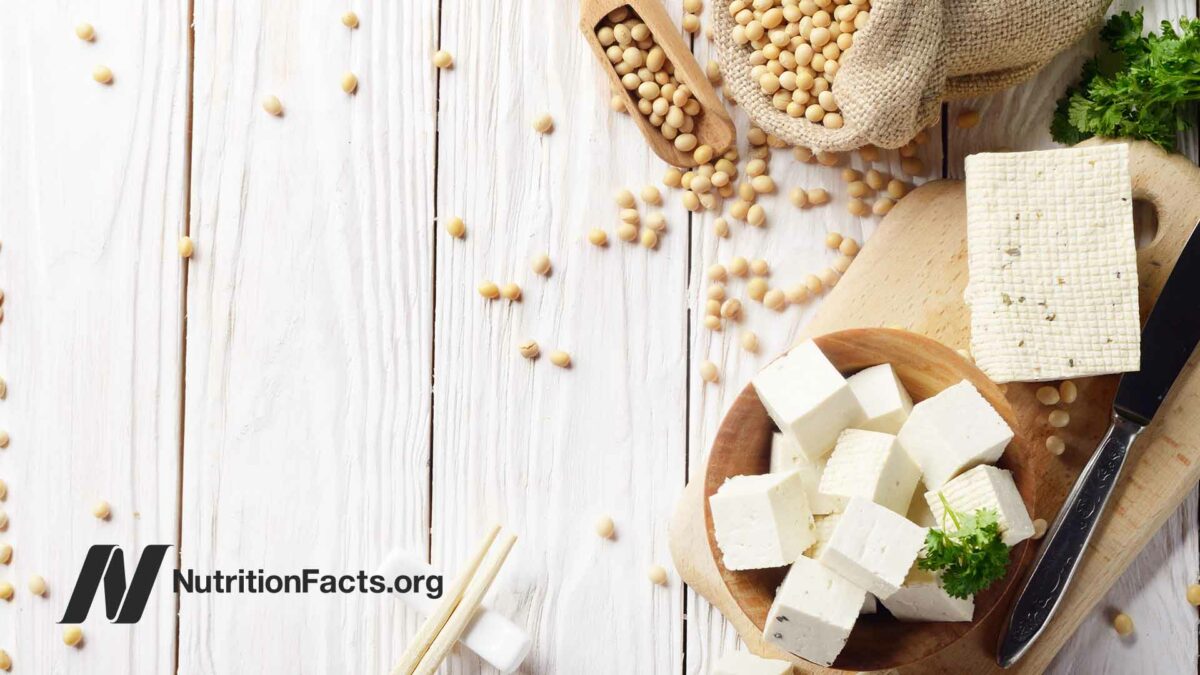
Breast Cancer Survival and Soy
All three human studies on soy and breast cancer survival suggest that soy in sufficient...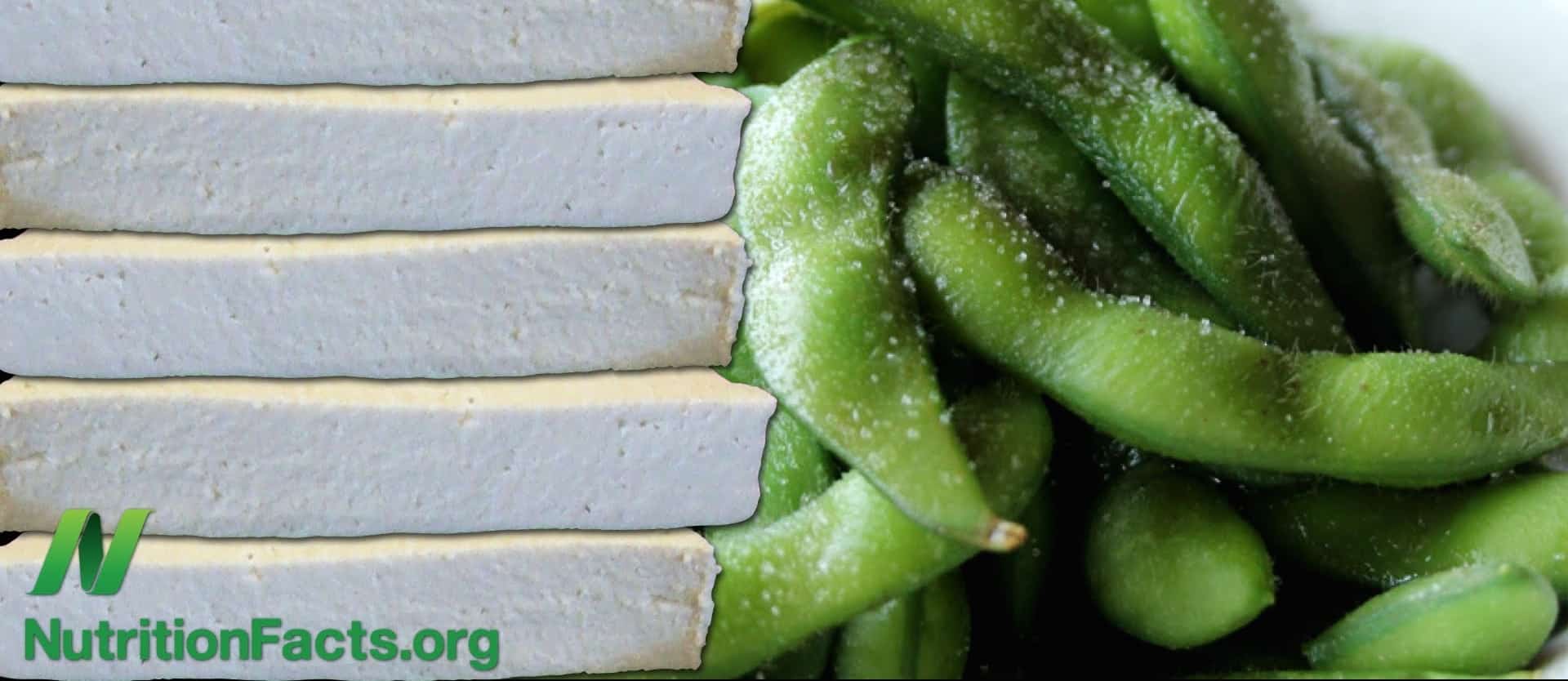
How Much Soy Is Too Much?
To maintain the low IGF-1 levels associated with a plant-based diet, one should probably eat...
Soy Foods for Menopause Hot Flash Symptoms
Soy can be considered a first-line treatment for menopausal hot flash and night sweat symptoms.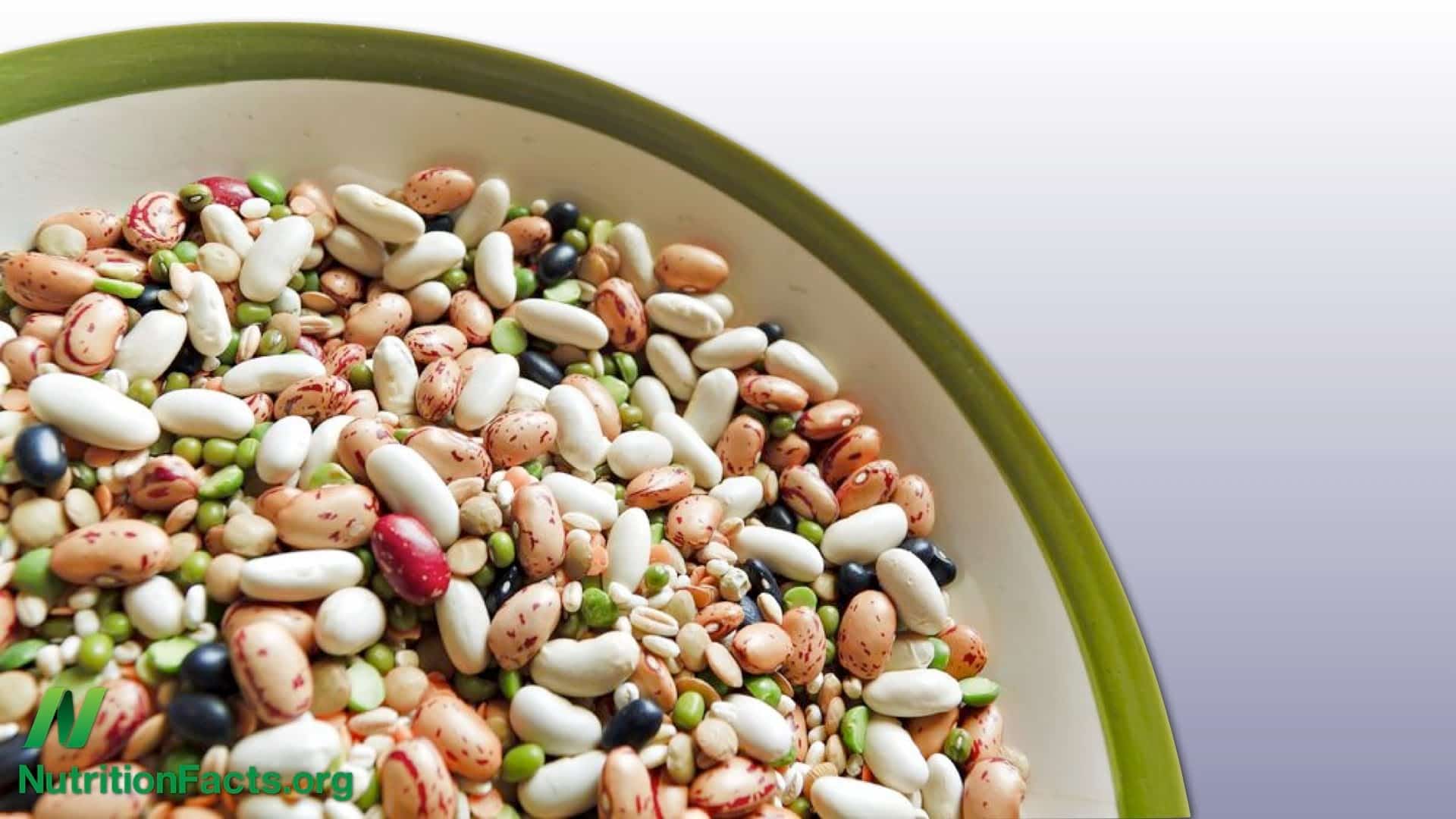
Soy Worth a Hill of Beans?
Are soybeans better than other types of beans for heart disease prevention—or does the soy...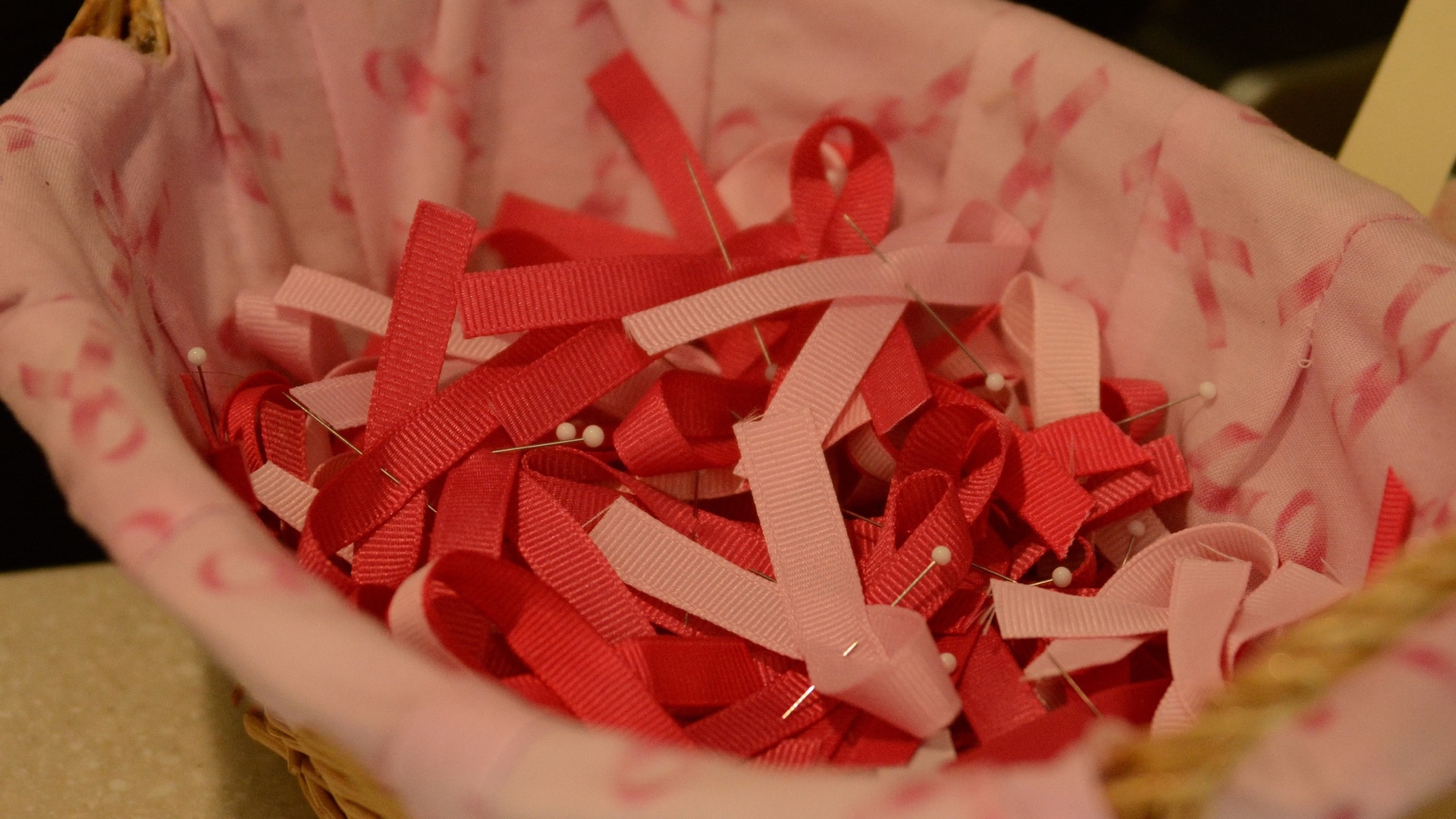
Should Women at High Risk for Breast Cancer Avoid Soy?
Which dietary changes could reduce free radical damage and also improve DNA repair in women...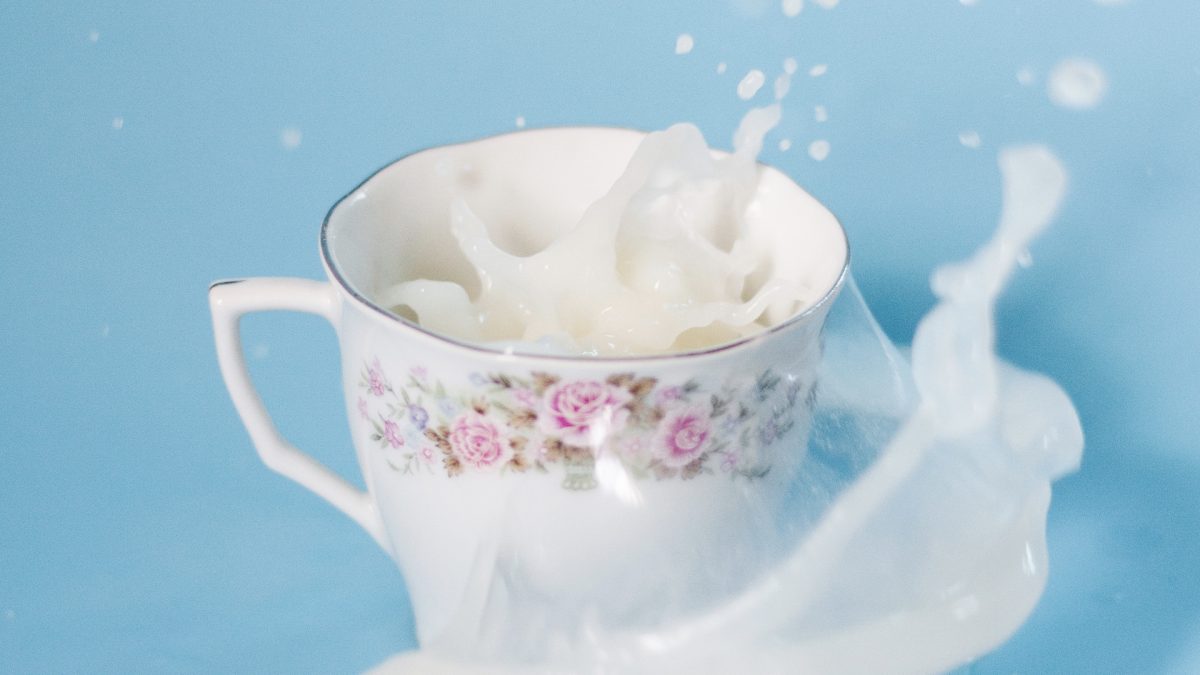
Should Women with Fibroids Avoid Soy?
When it comes to uterine fibroids, is soy harmful, harmless, or helpful?All Videos for Miso
-

Recipe: Lentil–Walnut Burgers with Cheesy Sauce
Our Lentil–Walnut Burgers with Cheesy Sauce are delicious, hearty, and easy to make.
-

The Role of Kimchi and H. Pylori in Stomach Cancer
What explains the Achilles’ heel in certain Asian diets?
-

Recipe: Soba Noodle Soup
A light broth soup, packed with a rainbow of vegetables and hearty buckwheat soba noodles. Toss in edamame or your favorite vegetables and spices to make this recipe your own. This recipe comes from Hailey, our Chinese Social Media Manager.
-

Recipe: Veggie Mac & Cheese
A cruciferous spin on macaroni and cheese, this recipe takes comfort food to a whole new level, and is a tasty way to check off a few servings on the Daily Dozen checklist. This recipe comes from Kristina, our Social Media Director.
-

Recipe: Garlic Caesar Salad Dressing
My go-to salad dressing, from the How Not to Die Cookbook.
-

Fermented or Unfermented Soy Foods for Prostate Cancer Prevention?
Which appear more protective: fermented soy foods, such as miso and tempeh, or unfermented soy, like tofu and soy milk?
-

Is Miso Healthy?
Miso is packed with sodium, which is linked to both stomach cancer and high blood pressure, so is it safe to consume?
-

Carcinogenic Putrescine
Biogenic amines such as spermine, cadaverine, and putrescine are chemical compounds of decay that may have adverse health effects. Which foods are most contaminated: beer, blue cheese, feta cheese, kimchi, miso, sardines, sauerkraut, sausage, soy sauce, tempeh, tuna, or wine?
